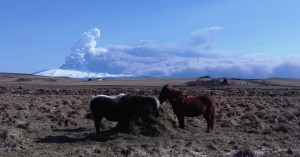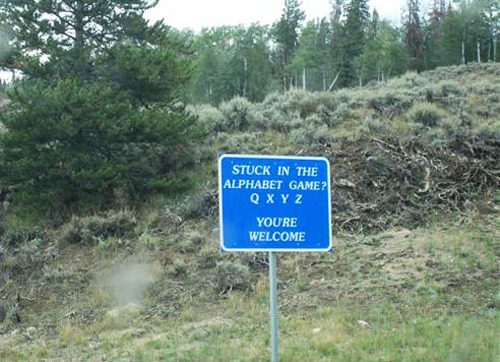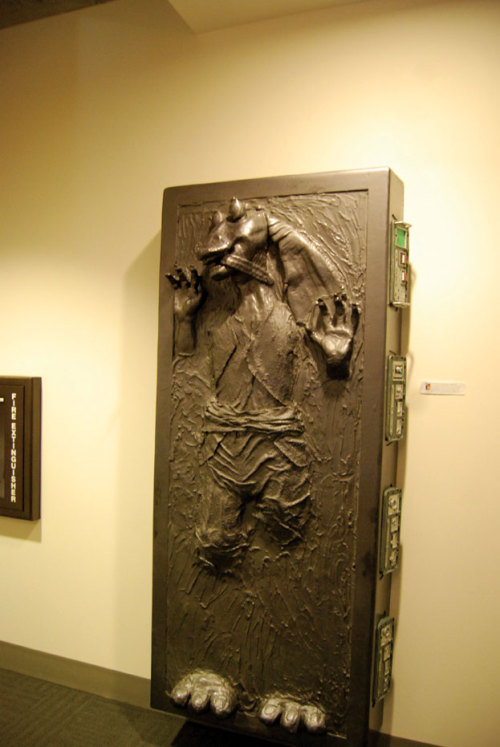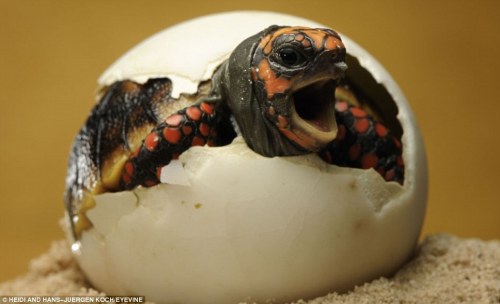Blondie, Die Young, Stay Pretty: (Too late for me)
Blondie, Shayla:
Blondie, Accidents Never Happen
Is This Your Hat?
11 years ago
Miscellaneous thoughts on politics, people, math, science and other cool (if sometimes frustrating) stuff from somewhere near my favorite coffee shop.
 On April 17, 1970, Apollo XIII, crippled in an explosion several days earlier, successfully returned to Earth, where many of us had been biting our nails for days. The above is featured at APOD today. I don't think I've seen this image before, and it serves as a stark reminder of just how close a call this was.
On April 17, 1970, Apollo XIII, crippled in an explosion several days earlier, successfully returned to Earth, where many of us had been biting our nails for days. The above is featured at APOD today. I don't think I've seen this image before, and it serves as a stark reminder of just how close a call this was.
 From Sigrún Davíðsdóttir's Icelog; click over and click the image for full-size. Peace and Chaos in the same frame... which is sort of the point this journalist is making. Mainland Europe is in a lockdown, but Icelanders are, for the most part, just going about their lives and largely unaffected. The primary point of her blog is to explore what was going on with the Icelandic financial industry in the time leading up to its collapse... a point of which I was unaware when I choked on my coffee over her closing line:
From Sigrún Davíðsdóttir's Icelog; click over and click the image for full-size. Peace and Chaos in the same frame... which is sort of the point this journalist is making. Mainland Europe is in a lockdown, but Icelanders are, for the most part, just going about their lives and largely unaffected. The primary point of her blog is to explore what was going on with the Icelandic financial industry in the time leading up to its collapse... a point of which I was unaware when I choked on my coffee over her closing line:The word going around in Iceland now is that the last wish of the Icelandic Financial System was for its ashes to be spread out over Europe…
Pay particular attention to the difference between using only lowercase characters and using all possible characters (uppercase, lowercase, and special characters – like @#$%^&*). Adding just one capital letter and one asterisk would change the processing time for an 8 character password from 2.4 days to 2.1 centuries.There are lots of simple pointers to make your passwords several orders of magnitude more difficult to hack, and plenty of reasons to apply these pointers. I won't say anything about my own passwords; I have my own system for generating, and more importantly, remembering the danged things. But I'm pleasantly surprised by their apparent strength.
 I'm not certain exactly what we're seeing here... fresh lava? Ash on ice? Craters, explosion pits, melt holes in the ice? Again, I don't know. But The NYT says, "According to the Coast Guard, the three craters are between 200 and 500 meters in diameter."
I'm not certain exactly what we're seeing here... fresh lava? Ash on ice? Craters, explosion pits, melt holes in the ice? Again, I don't know. But The NYT says, "According to the Coast Guard, the three craters are between 200 and 500 meters in diameter." So the "mouth" on that angry-looking image above is nearly a third of a mile across.
So the "mouth" on that angry-looking image above is nearly a third of a mile across.Today children learn about the Laki in school and because of the frequent volcanic eruptions, geology and the study of lava is a compulsory part of the education curriculum.Now that's very interesting. Geology and the earth sciences are largely neglected in US schools. At the K-12 level (with a few exceptions; I think New York requires a high school level earth science class), geology is watered down and relegated to 7th or 8th grade. I have analyzed a number of those mid-level curricula, dating from the 60's to the mid 90's, and for the most part they're simply awful (again, with a few exceptions). At the college level, other than degree tracks, geology is often presented as "rocks for jocks," that is, with the assumption that the students are uninterested meatheads, unable and unwilling to make broad connections from the curricula to societal concerns. Not only is this unfair to the science and society, it unfairly reinforces the stereotype that athletes are idiots.
It was not the first time air traffic has been halted by a volcano, but such widespread disruption has not been seen the Sept. 11, 2001 terror attacks.Obviously, I find this eruption fascinating and exciting, and I'm reading every last tidbit I can find. I've been surprised at how many people I've talked to today who haven't heard this news yet, and even more surprised at the number of people who have heard of the air travel disruption, but have no idea what caused it. In a way, it seems analogous to someone being aware of airplane groundings on 9/12, but not sure why.
"There hasn't been a bigger one," said William Voss, president of the U.S.-based Flight Safety Foundation, who praised aviation authorities and Eurocontrol, the European air traffic control organization, for closing down airspace. "This has prevented airliners wandering about, with their engines flaming out along the way."
 The next issue is that no one has any idea just how long this eruption will go on. Comments I've read from people who know this stuff much better than I do say these sorts of eruptions can last from weeks to years; the last time this particular volcano erupted, it lasted for
The next issue is that no one has any idea just how long this eruption will go on. Comments I've read from people who know this stuff much better than I do say these sorts of eruptions can last from weeks to years; the last time this particular volcano erupted, it lasted for  Apparently, some Sottish fellow, stranded in an airport bar, is taking exception to this volcanic exposure. (Via BuzzFeed:)
Apparently, some Sottish fellow, stranded in an airport bar, is taking exception to this volcanic exposure. (Via BuzzFeed:) And Mary at Geographile found an awesome clip of raw footage. All of the current photos I've seen so far are heavily cloud covered at the elevation of the volcano itself, so there's dark ash and white water clouds emerging from other clouds. No images, as far as I've seen, are available of the current eruption on the ground. But the magnitude of the flooding as glacial ice melts is pretty amazing.
And Mary at Geographile found an awesome clip of raw footage. All of the current photos I've seen so far are heavily cloud covered at the elevation of the volcano itself, so there's dark ash and white water clouds emerging from other clouds. No images, as far as I've seen, are available of the current eruption on the ground. But the magnitude of the flooding as glacial ice melts is pretty amazing. So the above, keyed to CET, Central European Time, or GMT +2, was a bit more than 3 hours ago. The chart is part of a photogallery in today's Spiegel Online; those little gold thingies (click for full size) are flights that were in the air 2 1/2 hours earlier. According to the accompanying article,
So the above, keyed to CET, Central European Time, or GMT +2, was a bit more than 3 hours ago. The chart is part of a photogallery in today's Spiegel Online; those little gold thingies (click for full size) are flights that were in the air 2 1/2 hours earlier. According to the accompanying article,An enormous plume of volcanic ash, invisible from the ground, has traveled from Iceland to northern Europe and grounded commercial air travel from Scandinavia and Britain to Belgium. Thousands of flights have been cancelled. Problems are expected through the weekend, and Germany hasn't been spared.(Emphasis mine) Chatting with a friend an hour or so ago, I commented that I couldn't think of a more wide-spread disruption of air travel due to volcanic ash, but apparently it's the largest disruption ever, for any cause. Is it really a greater disruption than 9/11? My suspicion is, not yet. But while the above article also has the line, "Eurocontrol estimates that air traffic will be affected for another 48 hours, " the fact is, no one knows what the volcano's plans are. It may explosively erupt sporadically for days or weeks, or it may have already gone back to sleep, as far as I know.
The Netherlands-based European Organization for the Safety of Air Navigation, or Eurocontrol, says the flight cancellations represent the most serious interruption of plane traffic in the history of air travel. Because of a massive ash plume from a volcano under the Iclandic glacier of Eyjafjallajökull, which erupted Wednesday, around one-quarter of all flights in Europe have been cancelled.
 Numbers 7, 10 and 13 are kind of jaw-dropping too. I'm pretty sure what we're seeing above is a jokulhaup, a sub-glacial flood burst.
Numbers 7, 10 and 13 are kind of jaw-dropping too. I'm pretty sure what we're seeing above is a jokulhaup, a sub-glacial flood burst.
The U.S. Census Bureau is asking Oregon residents to return their census forms before the weekend to avoid a visit from an agency worker.The figures I've seen vary somewhat, but seem to be in the range of $1500 to $2000 per person for the amount of Federal funds that come to the community and state as a result of being counted in the census. (I presume that's over the course of the subsequent decade.) Also, of course, the figures are used to determine the number of representatives to the US House your state has. I've seen talk that Oregon might add another rep this time, but I haven't seen anything on it lately, so perhaps that's looking less likely now. Quite a number of the liberal bloggers have pointed out that the ever-confounded Michelle Bachmann's calls to avoid the Census count could cost Minnesota a representative, and if a seat is cut, it will be hers.
As of Tuesday, 69 percent of Oregon households had mailed their census forms, slightly more than the 67 percent mail-back rate nationwide.
"The census form on your kitchen table is a vital investment in your community," Census Bureau Director Robert Groves said in a statement. "It's time for all of us to do our part. Fill it out and mail it back today. Get it in the mail by Friday and you can avoid a visit from a census worker in May."
What is the cost per household to conduct the census, and how much is the Census Bureau spending per household on advertising on TV, radio, etc.?One of my IZ friends never received a form; the feds will undoubtedly track him down next month. So some cases are unavoidable. If, like me, you let the envelope collect dust for several weeks before taking a minute or less to fill it out and get it in the mailbox, you're set. But if it's still accumulating fine air-borne particulates, take a moment (and it really is very quick and easy) to fill it out, and get it into the mail.
To ensure that the public is aware of importance of mailing back the 2010 Census questionnaire when they receive it, and the millions of dollars in taxpayers’ money saved by doing so, the Census Bureau is spending about $1 per person on our combined promotion and outreach efforts. It costs [the Census Bureau] just $.42 cents to mail back the census form in a postage paid envelop. It costs taxpayers $25 per person to send a census taker door-to-door to collect the same information if they didn’t mail it back. Promotional and outreach efforts are heavily focused on increasing the number of households to mail back their form when they receive it this March. For every one percentage point increase in the national participation rate by mail, taxpayers can help the Census Bureau save about $85 million in operational costs.
 or Easter, for that matter. EpicPonyz
or Easter, for that matter. EpicPonyzConan O'Brien, who counted his viewers in the millions on NBC's "Tonight," is playing to a small-town crowd of 2,500 -- and no TV cameras -- as he opens a two-month, nationwide comedy tour Monday.I'm not sure what the lower population limit is to be considered a "city," and Eugene is certainly not a "big city." But Corvallis is about 50,000, and I wouldn't call it a "small town."
For now, the gangly redhead is news in Eugene, population about 138,000 and nestled among forests, farmlands and rivers 50 miles from the Oregon coast. It's home to the University of Oregon, Ducks football and a fair share of the region's beloved coffee kiosks and shops (Nina's Pony Espresso, among the dozen-plus here, gets points for the name).Furthermore, Eugene is more accurately described as Eugene-Springfield; it's one of those strange double towns, where unless you know the area well, you can move from one to the other without knowing it. According to Wikipedia,
With tongue firmly planted in cheek, O'Brien tweeted on his Twitter account Sunday night: "I'm in Eugene, OR and my room faces the theater where I debut tomorrow. The mob outside is in a frenzy."
As of 2008, Eugene had a population of 154,620, and the greater Eugene-Springfield metropolitan statistical area (MSA) had a population of 346,560.Now there's plenty of Oregon that's rural, and plenty that's downright unpopulated- for example, Harney County has a population of 7,609 people (2000 Census figures), with an area of 10,226.5 sq. miles, for a population density of ~0.74 people per square mile. But I don't think of an area with nearly 350,000 people living in it as exactly "small town."
 BuzzFeed has ten Classic Quotes care of MB. Regarding the above comment, she might want to try breathing straight CO2 for, say, 30 seconds or so- not enough to cause permanent harm, you know, but long enough to get the idea. Having messed around with the gas in teaching contexts enough to have had my share of carbon dioxide hits, I promise it's not pleasant.
BuzzFeed has ten Classic Quotes care of MB. Regarding the above comment, she might want to try breathing straight CO2 for, say, 30 seconds or so- not enough to cause permanent harm, you know, but long enough to get the idea. Having messed around with the gas in teaching contexts enough to have had my share of carbon dioxide hits, I promise it's not pleasant.Reasons previously suggested for the phenomenon include religion and drugs.So I can see why she feels it necessary to defend the compound. Her entire thought process is dominated by persistently high blood levels of CO2.
Those who have had near-death experiences report various encounters, including seeing a tunnel or bright light, a mystical entity, or looking down from the ceiling at the scene below in an "out of body" experience.
Others describe a simple but overwhelming feeling of peace and tranquility.
Previous research has shown that inhalation of carbon dioxide can induce hallucinatory experiences similar to those reported in near-death experiences.So there you go.
 Dave Hone, whom I know of primarily through his blog, Archosaur Musings, recently posted a request for questions for another site he works on: Ask A Biologist. Here is a description from that site:
Dave Hone, whom I know of primarily through his blog, Archosaur Musings, recently posted a request for questions for another site he works on: Ask A Biologist. Here is a description from that site:This is a special site aimed at schools and devoted to providing the best scientific information available to school kids around the UK. But don’t be put off, we will accept questions from anyone who asks.And from the call for questions,
I'm sorry to say that we are not here to do your homework for you, but if you want more information on any aspect of biology ( the study of life) or palaeontology (the study of the history of life) then we are here to help. We want to take you beyond the classroom - if you want to know more, then come here to ask us and find out.
...this is a site where people can leave their biology based questions and a team of researchers from all over the world will pitch in and try to answer. There’s no middle man, no filter of journalists, precis, reviews or anything else, you ask us, we answer.The newly relaunched site has received some grant and other money, and is in the process of being refurbished and having some new features added. So if you are a teacher, a kid, or a kid at heart, with a question about the living world (or the once-living world), as of April 19 (a week from tomorrow), these guys will be ready to answer it for you.And really answer in some cases, discussions of detailed or intricate questions have run to days or weeks over dozens of posts. We seem to operate a less formal peer review with people correcting each others’ errors, discussing points of taxonomy and definitions, philosophy of science and more. It’s a great introduction to the workings of academia and all the while bringing first hand information and knowledge to those who want it.
 Folded and faulted rocks at Noctis Labyrinthus, on Mars. I have long wondered to what extent tectonic deformation played a role in Mars' "geology." It's pretty clear that for much of its history, Mars has been more or less dead in terms of tectonism. Olympus Mons, the largest known volcano anywhere, is interpreted to be the equivalent of Earth's hot-spot volcanism erupting onto a stable, unmoving crust. So it was possible that the Martian crust was never really mobile. But you don't get features like those above without a least a little crustal motion. (Red Orbit)
Folded and faulted rocks at Noctis Labyrinthus, on Mars. I have long wondered to what extent tectonic deformation played a role in Mars' "geology." It's pretty clear that for much of its history, Mars has been more or less dead in terms of tectonism. Olympus Mons, the largest known volcano anywhere, is interpreted to be the equivalent of Earth's hot-spot volcanism erupting onto a stable, unmoving crust. So it was possible that the Martian crust was never really mobile. But you don't get features like those above without a least a little crustal motion. (Red Orbit)
 Criggo
Criggo Criggo
Criggo Loltheist; Jesus is a dick. More to come...
Loltheist; Jesus is a dick. More to come... Engrish Funny
Engrish Funny Darius Whiteplume's Tumblr
Darius Whiteplume's Tumblr Shoebox Blog
Shoebox Blog Criggo
Criggo Sober in a Nightclub
Sober in a Nightclub Cyanide and Happiness
Cyanide and Happiness xkcd
xkcd
 Nedroid Comics
Nedroid Comics Bits and Pieces
Bits and Pieces BizarroBlog
BizarroBlog Want. The Daily What.
Want. The Daily What. Oregon Expat, with the title "Language is no barrier to a well-drawn comic." (The caption, if you can't guess, translates as "The evolution of TV.")
Oregon Expat, with the title "Language is no barrier to a well-drawn comic." (The caption, if you can't guess, translates as "The evolution of TV.") Criggo
Criggo God Hates Protesters
God Hates Protesters Balloon Juice
Balloon Juice Friends of Irony
Friends of Irony
 My First Dictionary
My First Dictionary Blackadder
Blackadder I can see how foreign manufacturers could make that mistake. Though honestly, I'd think Ronald McDonald would be more likely. Skull Swap
I can see how foreign manufacturers could make that mistake. Though honestly, I'd think Ronald McDonald would be more likely. Skull Swap Alphaville
Alphaville The Daily What
The Daily What epic4chan
epic4chan Sober in a Nightclub
Sober in a Nightclub Bits and Pieces
Bits and Pieces Balloon Juice
Balloon Juice Pundit Kitchen
Pundit Kitchen xkcd
xkcd The final fate of Jar Jar Binks, via Darius Whiteplume's Tumblr.
The final fate of Jar Jar Binks, via Darius Whiteplume's Tumblr.
 Saturday Morning Breakfast Cereal
Saturday Morning Breakfast Cereal Skull Swap
Skull Swap Criggo
Criggo
 Yawp!!! I don't claim to understand the phenomenon, but, for me at least, at a certain point, "too cute" becomes "very funny." Skull Swap; full-size here.
Yawp!!! I don't claim to understand the phenomenon, but, for me at least, at a certain point, "too cute" becomes "very funny." Skull Swap; full-size here. A whole bunch of "Jesus is a dick" comics at BuzzFeed
A whole bunch of "Jesus is a dick" comics at BuzzFeed Probably Bad News
Probably Bad News
